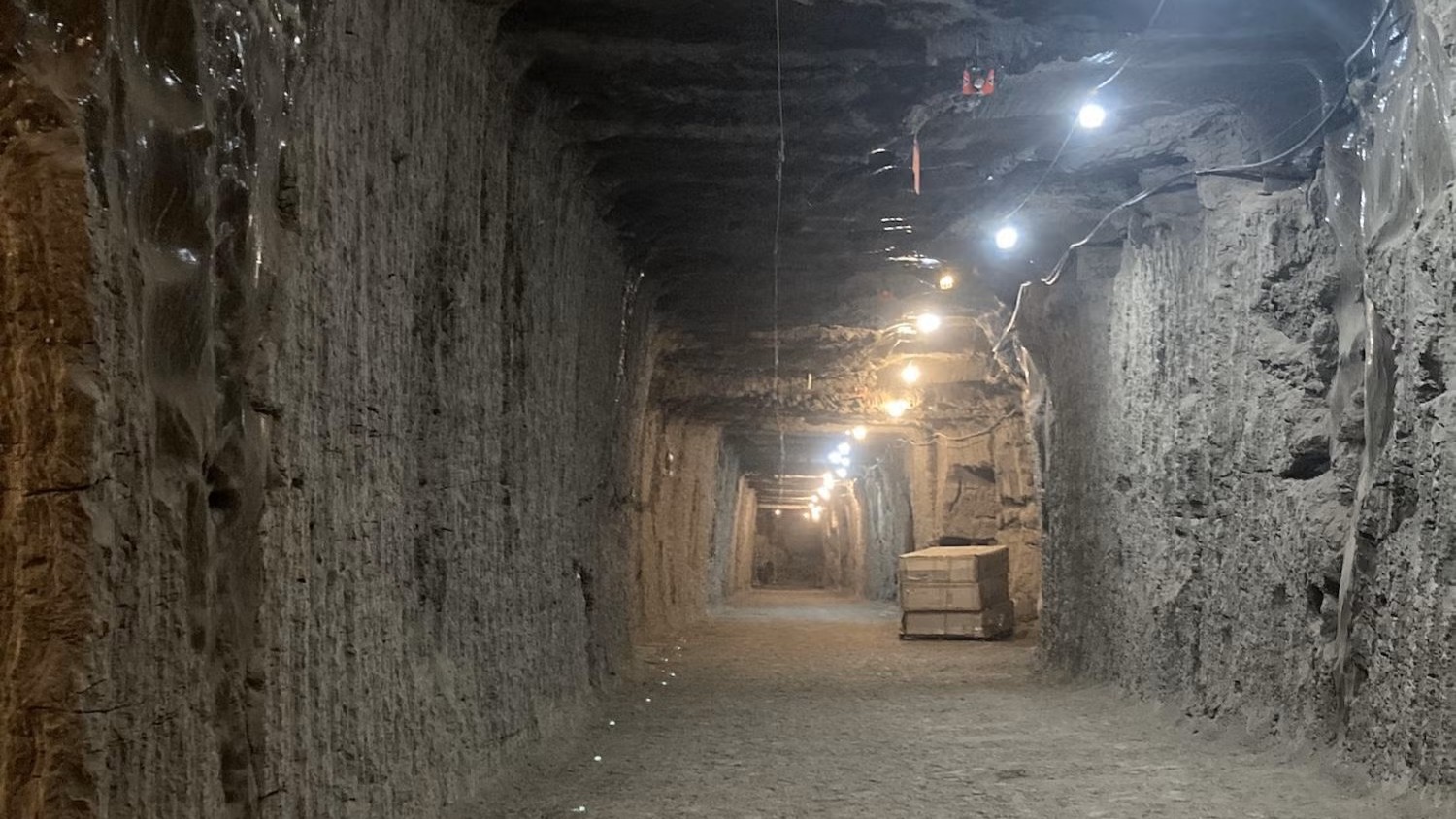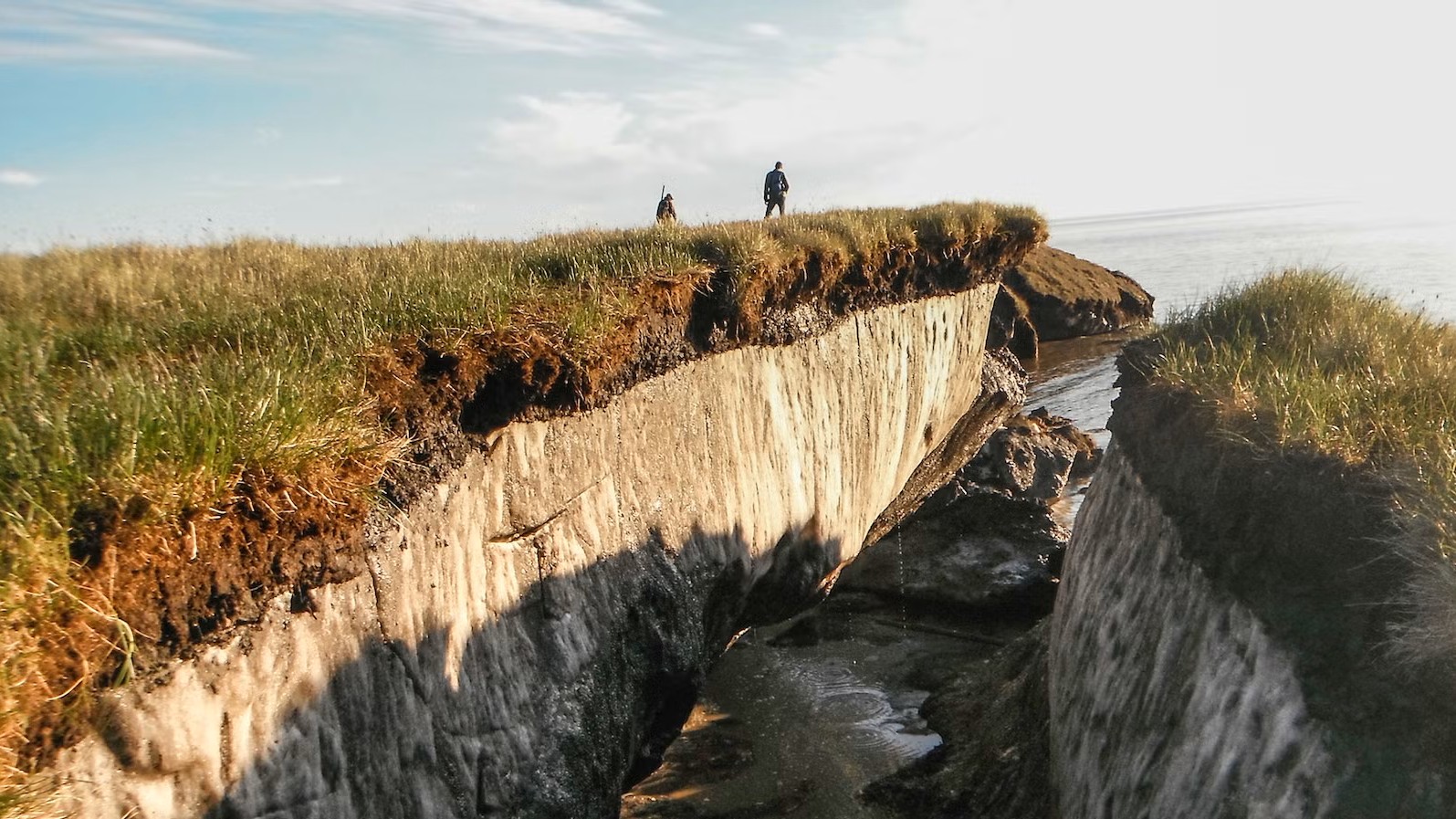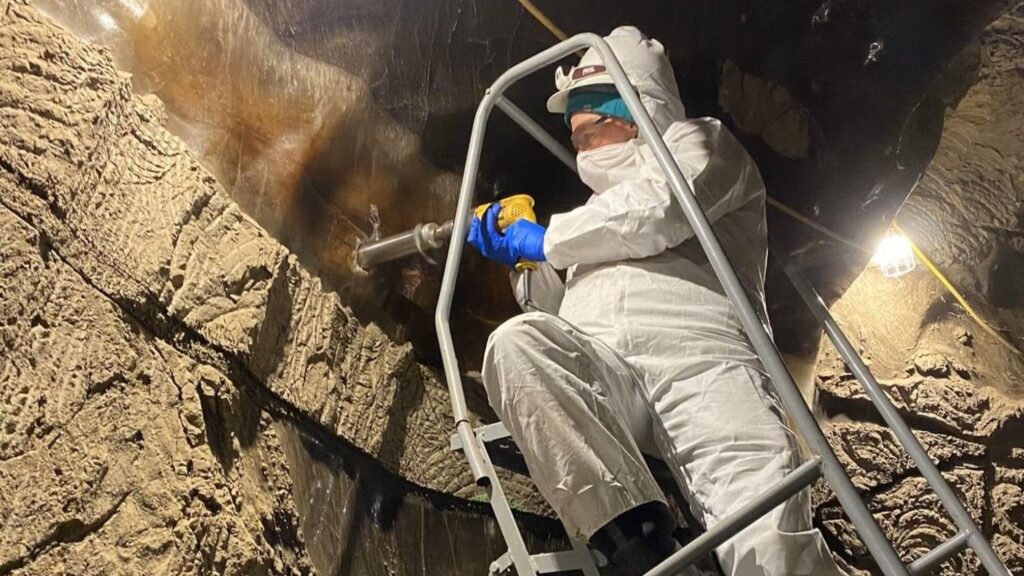As Arctic summers get longer, microorganisms that have been suspended in permafrost for up to 40,000 years could “wake up” and start emitting large amounts of greenhouse gases, a new study suggests.
Under future climate conditions, microorganisms that have been dormant since the last ice age (2.6 million to 11,700 years ago) could take just a few months to become active again, according to a study published Sept. 23 in the Journal of Geophysical Research: Geosciences. Scientists warn that doing so, even for part of the year, could trigger a feedback loop that accelerates permafrost thaw and global warming.
you may like
“Alaska summers may have one hot day, but more importantly, these warm temperatures extend into the summer season, lasting from fall to spring,” study lead author Tristan Caro, a postdoctoral fellow in geobiology at Caltech, said in a statement.
Caro and his colleagues collected samples from a permafrost research tunnel near Fairbanks. The tunnel is 50 feet (15 meters) underground and extends more than 350 feet (107 meters) into permafrost, offering a glimpse of life during the late Pleistocene (129,000 to 11,700 years ago).
Their aim was to measure the resuscitation and proliferation rates of microorganisms that lived during this time. But when Caro entered the tunnel, he also noticed the bones of mammoths and bison protruding from the ice walls.
“The first thing you notice when you walk in there is that it really stinks,” said Caro, who conducted the research as a graduate student at the University of Colorado Boulder. “For microbiologists, this is very interesting because interesting smells are often caused by microorganisms.”
Back at the lab, the researchers soaked the sample in water containing unusually heavy hydrogen atoms, also known as deuterium. The samples were then incubated in refrigerators set at 25, 39, or 54 degrees Fahrenheit (minus 4, 4, or 12 degrees Celsius) and periodically tested for changes in microbial activity.
“We wanted to simulate what would happen in the Alaskan summer under future climate conditions where these temperatures reach deeper regions of permafrost,” Caro said.
A month into the experiment, the team didn’t see any significant changes, even in the two warmer samples. A small number of microorganisms woke up from a long slumber, but only 0.001% to 0.01% of the cells were replaced by new active cells each day.
you may like

But everything changed in the months that followed. The deuterium in the samples allowed the researchers to track how much water the microbes consumed to build fatty membranes around their cells. This revealed that ancient organisms preferentially produced fatty acids called glycolipids, which researchers believe may be involved in cryopreservation.
The study found that after six months into the experiment, the microbes grown at 39°F and 54°F experienced “dramatic” changes in community structure and activity levels. Although the samples were not as diverse as the active layer of permafrost, the microbes were as active as more modern microbes and even produced slimy structures called biofilms that were visible to the naked eye.
“These are not dead samples by any means,” Caro said.

The results have broad implications for the Arctic and Earth’s climate, as microbes in permafrost survive by feeding on organic matter, which they convert into carbon dioxide and methane. Global temperatures are rising faster in the Arctic than anywhere else in the world, and permafrost is thawing at alarming rates and over long periods of time. As Arctic summers lengthen and deep temperatures rise, ancient microbial colonies could wake up and start emitting carbon.
Permafrost in northern regions currently contains about twice as much carbon as Earth’s atmosphere, so large-scale releases could contribute significantly to climate change. This could accelerate permafrost thaw, creating a vicious cycle of warming, more thawing, and more warming.
“This is one of the biggest unknowns in climate response,” study co-author Sebastian Kopf, associate professor of geological sciences at the University of Colorado Boulder, said in a statement. “If all this frozen ground, which we know stores a lot of carbon, thaws, what would that mean for the ecosystems in these regions and the rate of climate change?”
However, the researchers noted that this study only looked at ancient microbes in one location, and microbes in other regions may respond differently to warming.
“There’s a huge amount of permafrost in the world, in Alaska, Siberia and other cold northern regions,” Caro said. “We’ve only sampled a small portion of it.”
Source link

